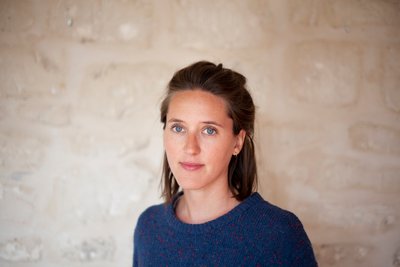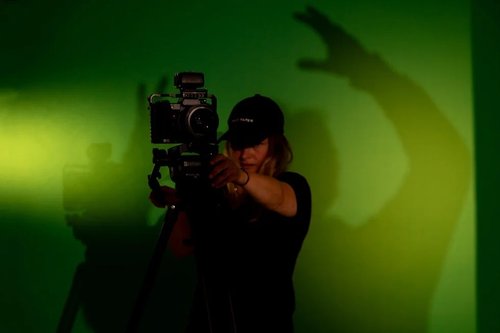Selling yourself: the art of storytelling on LinkedIn
Jan 18, 2022 - updated Mar 19, 2024
7 mins


Rédacteur & Photographe
There are many ways to tell your story. From the obvious style – “I’m Kate, a freelance graphic designer and graduate of such and such a school of design” – to the lively tale. How many ignored resumes, discarded cover letters, and ignored LinkedIn profiles will it take for you to understand that vague, cut-and-paste descriptions are unlikely to catch the eye of a recruiter?
Storytelling is literally the art of telling stories. We’re not talking about impersonal ones, written in the third person, but a singular, unique story with a personal tone: yours. “The power of a story,” said Pete Docter, director and screenwriter at Pixar, “is that it has the ability to connect people on an emotional level.” So it’s no use offering information about yourself in a linear form as if you were writing a catalog. Your summary on LinkedIn is like a snippet of your life. Punchy and telling, its aim is to lure in the reader, to make them want to learn more about you. To guide you in writing your personal story, we met with Marie Fray, a LinkedIn coach in personal branding based in the south of France.
The story where you are the hero
“Your bio on LinkedIn is an opportunity to differentiate yourself,” says Fray. “Storytelling is the perfect tool to showcase your professional background, your personality and your expertise. The idea is not to overload your story with personal details, but to reveal enough about yourself to connect emotionally with your reader. That way you can perfectly explain your professional journey through the highlights of your life.”
The first few lines of your story should be as compelling as the first lines of a manuscript sent to a publisher. “The first sentence is key as this is the only part of the text that gets displayed,” says Fray. “You have to encourage the recruiter or prospect to click on ‘see more’. To do this, get straight to the heart of the matter.” Set the scene right away. Who are you? What is your goal? What value do you bring to the table?
“The goal is to get your audience to identify perfectly when reading about you. Your story must therefore give rise to emotions in them such as fear or sadness.”
– Marie Fray, Linkedin coach in personal branding
“This part should sum up the different chapters of your story,” says Fray. “First, use a catchy sentence that piques the reader’s curiosity. Then ask them a question.” For example, a coach might write: Want to gain self-confidence? “Then, you have to put yourself in your target reader’s shoes: recruiters, prospects, etc. Feel free to mention them directly: CEOs, companies, individuals. Describe in detail the issues they are having, their ‘pain points’. The goal is to get your audience to identify perfectly when reading about you. Your story must arouse emotions in them such as fear or sadness. To really get their attention, you should offer solutions: your services, a product, your added value. Finally, flesh out your story with concrete anecdotes illustrating the benefits your former employers (benefited from when using your services), your former clients. Talk about your experiences genuinely and honestly. And, to finish, slip in a ‘call to action’ such as your email address or your website.” And if they get in touch afterwards? There’s your happy ending.
Pick an original angle
“At no time should you lie or embellish reality in your summary,” says Fray. “Tell your story as it is.” On the other hand, you can take the opportunity to be original in the form. “Humor is a powerful driver of differentiation. If you are naturally funny, feel free to use your talent to illustrate your personality.” Just be careful not to take it too far.
If you’re not particularly funny, choose a different route. Otherwise, it’s a sure flop. “Some choose to tell an anecdote,” says Fray. “Others use metaphors that bring together their favorite sport and their values at work. The important thing is to humanize your story, to be as close to your personality as possible. Sometimes you see people writing “I’m a father of four”; after all, why not mention it?”
Find an impactful title
The Great Gatsby, Catcher in the Rye, Lord of the Flies – there have been many striking titles in the history of literature. While less romantic, the title of your LinkedIn profile is also important. “It is often overlooked but it is a key element,” says Fray. “You can use no more than 200 characters, but you have to make the effort to use them all. These are keywords that will allow a recruiter or prospect to find you.”
So what should you write? “First there is your current job title,” says Fray. “To find the right term, look at your job description, or the one used in LinkedIn vacancies. Don’t hesitate to take a look at a competitor’s description. Don’t copy others, but see their words as inspiration. You can also use your industry’s reference keywords. Finally, show differentiation. In my case, it would be: ‘I can help you to use your expertise and to perform well on LinkedIn’.”
What about when you are looking for a job? “All too often, I see the hashtags in profile titles: #OpenToNewOpportunities or #OpenToWork,” says Fray. “This is a mistake in my opinion. It may scare prospects and recruiters away. Life is such that we always want what we can’t have. Unfortunately, you are more likely to be contacted if you currently have a job. So show off. Fill out your profile as if you had a job, and, only at the end, mention that you are looking for an opportunity. Don’t forget the ‘call to action’ by including your contact details.”
Experience: tell your success stories
“This part can be messy, but it is crucial,” says Fray. “Storytelling is harder in this section, but the choice of words is very important. The aim is to report on your experiences and outline your role at the company.” The clearer the structure of the story, the more likely your message will get across. “For each experience, describe the context, your role and the concrete results that you obtained,” she says. Summarize them using bullet points. Use strong action verbs, such as “achieve”, “accomplish”, “increase”, and make sure each result is clear and quantifiable.
“Even if this section is more of a formality, you can use it to be persuasive,” she says. “For example, some people use the success stories technique: you arrived in the company in a given situation (Point A), and you worked to get to a better situation (Point B). It’s a classic before/after, and your job is to highlight all the steps you took to get there.”
Gaps in your resume: own your twists and turns
A resume will not always be linear. A sabbatical year here, parental leave there, a mishap, an extended trip or a career switch… Should you mention these in your story or not? “In general, I advocate for sincerity and authenticity,” says Fray. “We all have gaps in our stories, be they big or small. They are often a sign of renewal, of a personal transformation that has had an impact on our professional life.” Own your twists and turns. They are what give your story depth.
“We all have gaps in our stories, be they big or small. They are often a sign of renewal, of a personal transformation that has an impact on our professional life.”
Fray says you don’t need to mention your few months of maternity leave on LinkedIn. “What you do need to do is to ensure that the experience can be shown to have value,” says Fray. “You have to be able to explain what it brought you. This is the best way to avoid being caught off guard on the day of an interview when you are asked the question: What did you do between 2016 and 2017?” Always keep your personal story in mind. What message do you want to get across? It’s all about consistency.
Shape a universe that reflects your image
What is a universe? If we mention film director Tim Burton, do you know what we’re talking about? Okay, obviously we’re not asking you to go that far, but everyone has their own universe. It’s up to you to make it your own. “We’re used to seeing it for a product, or a brand, but self-promotion, or rather ‘personal branding’ applies to individuals too. So try to define your graphic charter: what are your colors (maximum 2)? What image do you want to create? Do you have a logo?” she says.
From emojis, to your profile photo and cover photo, there are plenty of opportunities on LinkedIn to show off and tell a coherent story about yourself. “Using emojis, in moderation, in the title or summary makes it easier to read,” says Fray. “It avoids the ‘Wikipedia template’ effect. There are also free tools available to check the impact of your photo on LinkedIn or to create graphic designs easily.” Choose a strong personal image, similar in style to the one that Marie Fray uses, which immediately catches your eye when you come across her profile.
LinkedIn posts: a poignant testimony
For Fray, if there is one great place to use storytelling on LinkedIn, it’s in the feed. “LinkedIn posts are pure storytelling. It is an ideal medium to show off, have fun, and establish your personal brand.”
If all this has left you feeling stumped, don’t panic. Here are some tips. “What works really well are success stories. Using an anecdote from your professional life will reveal your skills. It has to start with a strong hook, such as, ‘The best decision of my life?’ Then tell your story in your own words. Emphasize the problems you encountered, how you got over them, what you gained from the experience, and finish by explaining the moral of the story.”
This is no time to boast. “Instead, speak with humility and sincerity, flesh out the story of your doubts and fears. Build on your experience. Then end with a question that prompts comments: ‘What about you? Has that ever happened to you?’ ” The more authentic the story, the better it will read and the more you will connect with your target audience. Finally, to retain your audience, Fray recommends posting regularly. For example, you could choose Tuesdays and Thursdays.
Short of inspiration? Try the Pixar Pitch exercise. It’s really easy, just fill in the blanks: “Once upon a time… Every day… But one day… Because of that… Because of that… Until finally…” Or you can look to others for inspiration.
Storytelling is the art of capturing the attention of your audience and that includes potential recruiters. It is part of the narrative functioning process of the brain. Kids love stories, but even adults remember information better and are more focused when told a story. LinkedIn is a perfect tool to tell your professional life story and get noticed by a future employer or client. “No, no and no, LinkedIn is not a digital resume,” says Fray. “It is an incredible global professional directory, creator of human connections and emotions.” So, sharpen your pencils and get to work.
Translated by Kim Cunningham
Photo: Welcome to the Jungle
Follow Welcome to the Jungle on Facebook on LinkedIn and on Instagram and subscribe to our newsletter to get our latest articles every day!

More inspiration: Network for the job hunt

Messaging recruiters: 7 mistakes to avoid on LinkedIn
Think messaging a recruiter on LinkedIn guarantees an interview? Not if you make these mistakes. Here's how to get noticed for the right reasons.
Dec 02, 2024

From tech to television: the benefits of alumni networking
Using your alumni network can be a game-changer for your career, allowing you to connect with people who share your background and experiences.
Jul 30, 2024

How to network in tech with no experience
Networking can be daunting for anyone, but entry-level tech workers have a unique challenge ahead.
May 30, 2024

Make your mark: How to build a personal brand for the job hunt
What’s the secret to success in today’s job market? None other than personal branding.
Apr 22, 2024

Telling your story: How to craft a LinkedIn bio that will stand out to recruiters
This social media tool is at the tip of your fingers, and we bet you don’t know what you’re missing …
Feb 13, 2024
The newsletter that does the job
Want to keep up with the latest articles? Twice a week you can receive stories, jobs, and tips in your inbox.

Looking for your next job?
Over 200,000 people have found a job with Welcome to the Jungle.
Explore jobs